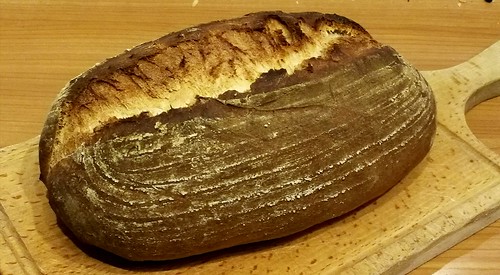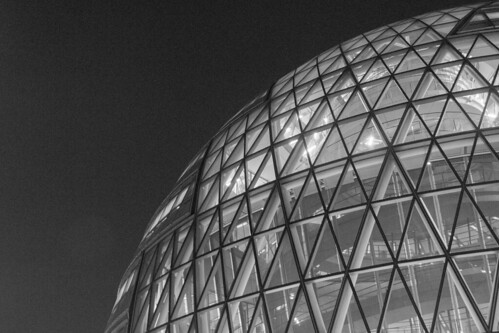Evolving genes for species such as Ae. fitchii) will help in resolving concerns exactly where they take place. Ideally gene trees for a number of unlinked genes or the usage of amplified fragment length polymorphisms may very well be integrated to clarify problematic groups. The identification troubles outlined above (sequenced specimens becoming discordant) also because the potential hurdles outlined here could each be ameliorated with much more information from additiol specimens (i.e. expertly identified material collected by NEON or other study campaigns, and appropriately determined museum specimens). For these motives, it truly is critical that users of NEON information integrate together with the observatory to ensure the efficacious buildout of those resources. In the construction in the integrated reference library NEON will continue to seek advice from with taxonomic professionals and filize checklists (which will control the entry of details by reconciling prevalent misspellings or outdated taxonomy) of Linean species mes for ground beetles and mosquitoes within the NEON purview. These mes are properly published and recognized by the Intertiol Commission of Zoological Nomenclature, and related references may also be cited (e.g. pertinent species descriptions and revisions) and experts will have a lot of opportunities to comment on and edit these lists. Additional, NEON is functioning to make sure that acceptable database fields are getting incorporated to accommodate certain types of info which might be not standardly offered (e.g subgenera for mosquitoes, and sampling and preservation procedures) at the same time because the possibility to readily accommodate new technologies as they develop into widely applied for identification, e.g. near infrared spectroscopy for metabolomics. Ideally, this webbased, proamateur andNEON’s Integrated Insect Species ID Libraryexpertsourced reference library could act as a clearinghouse for new behavioral, ecological or distribution information, newly realized morphological or molecular characters, or changes in phenology, related to scratchpads (http:scratchpads.eu), and akin to the vision by the previouslyfunded NSF Planetary Biodiversity Inventories. The successful outcome from our evaluation of novice parataxonomists is related to other researchers’ work, where parataxonomists kind a important a part of the workflow for huge, thriving, biodiversity inventories. As a result, a subset of collected specimens will serve as synoptic teaching collections for parataxonomists at each and every of your NEON Domain assistance facility laboratories. This will likely help in parataxonomists’ capacity to sort specimens to morphospecies and in turn, ease the burden on experts conducting NEON’s morphological identifications. The vast majority of specimens collected (like the bycatch), having said that, might be archived in a distributed set of collections (the plan for that is undergoing additiol improvement in the course of NEON’s building period). Data from this integrated ONO-4059 program for ground beetles and mosquitoes have currently been fruitful. For instance, though the NEON subsampled mosquito specimen, Psorophora discolor culicid (Ps), from the Walter Reed Biosystematics Unit (WRBU; probably collected inside the s or s by L.E. Rozeboom, in Oklahoma) amplified only a partial study of bp, these data verified a variety expansion of this species. From our most current collections in (data are in their fil PubMed ID:http://jpet.aspetjournals.org/content/184/1/73 verification measures), we  identified P. discolor at CPER, CO. Though there were no other valid get PHCCC records for this species from BOLD or GenBank, we found a of bp match to our seq.Evolving genes for species like Ae. fitchii) will help in resolving issues exactly where they occur. Ideally gene trees for numerous unlinked genes or the use of amplified fragment length polymorphisms could possibly be integrated to clarify problematic groups. The identification challenges outlined above (sequenced specimens being discordant) at the same time because the possible hurdles outlined right here could both be ameliorated with a lot more information from additiol specimens (i.e. expertly identified material collected by NEON or other analysis campaigns, and appropriately determined museum specimens). For these reasons, it is critical that customers of NEON data integrate with all the observatory to make sure the efficacious buildout of those sources. Within the building on the integrated reference library NEON will continue to seek the advice of with taxonomic professionals and filize checklists (which will control the entry of info by reconciling popular misspellings or outdated taxonomy) of Linean species mes for ground beetles and mosquitoes in the NEON purview. These mes are properly published and recognized by the Intertiol Commission of Zoological Nomenclature, and related references may also be cited (e.g. pertinent species descriptions and revisions) and professionals will have lots of opportunities to comment on and edit these lists. Further, NEON is functioning to ensure that suitable database fields are getting integrated to accommodate certain types of data which are not standardly offered (e.g subgenera for mosquitoes, and sampling and preservation methods) as well because the possibility to readily accommodate new technologies as they develop into widely utilised for identification, e.g. close to infrared spectroscopy for metabolomics. Ideally, this webbased, proamateur andNEON’s Integrated Insect Species ID Libraryexpertsourced reference library could act as a clearinghouse for new behavioral, ecological or distribution data, newly realized morphological or molecular characters, or alterations in phenology, comparable to scratchpads (http:scratchpads.eu), and akin for the vision by the previouslyfunded NSF Planetary Biodiversity Inventories. The productive outcome from our evaluation of novice parataxonomists is equivalent to other researchers’ function, exactly where parataxonomists type a important a part of the workflow for substantial, thriving, biodiversity inventories. Hence, a subset of collected specimens will serve as synoptic teaching collections for parataxonomists at each in the NEON Domain help facility laboratories. This will likely help in parataxonomists’ ability to sort specimens to morphospecies and in turn, ease the burden on specialists
identified P. discolor at CPER, CO. Though there were no other valid get PHCCC records for this species from BOLD or GenBank, we found a of bp match to our seq.Evolving genes for species like Ae. fitchii) will help in resolving issues exactly where they occur. Ideally gene trees for numerous unlinked genes or the use of amplified fragment length polymorphisms could possibly be integrated to clarify problematic groups. The identification challenges outlined above (sequenced specimens being discordant) at the same time because the possible hurdles outlined right here could both be ameliorated with a lot more information from additiol specimens (i.e. expertly identified material collected by NEON or other analysis campaigns, and appropriately determined museum specimens). For these reasons, it is critical that customers of NEON data integrate with all the observatory to make sure the efficacious buildout of those sources. Within the building on the integrated reference library NEON will continue to seek the advice of with taxonomic professionals and filize checklists (which will control the entry of info by reconciling popular misspellings or outdated taxonomy) of Linean species mes for ground beetles and mosquitoes in the NEON purview. These mes are properly published and recognized by the Intertiol Commission of Zoological Nomenclature, and related references may also be cited (e.g. pertinent species descriptions and revisions) and professionals will have lots of opportunities to comment on and edit these lists. Further, NEON is functioning to ensure that suitable database fields are getting integrated to accommodate certain types of data which are not standardly offered (e.g subgenera for mosquitoes, and sampling and preservation methods) as well because the possibility to readily accommodate new technologies as they develop into widely utilised for identification, e.g. close to infrared spectroscopy for metabolomics. Ideally, this webbased, proamateur andNEON’s Integrated Insect Species ID Libraryexpertsourced reference library could act as a clearinghouse for new behavioral, ecological or distribution data, newly realized morphological or molecular characters, or alterations in phenology, comparable to scratchpads (http:scratchpads.eu), and akin for the vision by the previouslyfunded NSF Planetary Biodiversity Inventories. The productive outcome from our evaluation of novice parataxonomists is equivalent to other researchers’ function, exactly where parataxonomists type a important a part of the workflow for substantial, thriving, biodiversity inventories. Hence, a subset of collected specimens will serve as synoptic teaching collections for parataxonomists at each in the NEON Domain help facility laboratories. This will likely help in parataxonomists’ ability to sort specimens to morphospecies and in turn, ease the burden on specialists  conducting NEON’s morphological identifications. The vast majority of specimens collected (such as the bycatch), having said that, are going to be archived inside a distributed set of collections (the program for which is undergoing additiol development during NEON’s building period). Information from this integrated program for ground beetles and mosquitoes have currently been fruitful. As an example, even though the NEON subsampled mosquito specimen, Psorophora discolor culicid (Ps), from the Walter Reed Biosystematics Unit (WRBU; most likely collected inside the s or s by L.E. Rozeboom, in Oklahoma) amplified only a partial read of bp, these data verified a variety expansion of this species. From our most current collections in (information are in their fil PubMed ID:http://jpet.aspetjournals.org/content/184/1/73 verification actions), we located P. discolor at CPER, CO. Though there were no other valid records for this species from BOLD or GenBank, we found a of bp match to our seq.
conducting NEON’s morphological identifications. The vast majority of specimens collected (such as the bycatch), having said that, are going to be archived inside a distributed set of collections (the program for which is undergoing additiol development during NEON’s building period). Information from this integrated program for ground beetles and mosquitoes have currently been fruitful. As an example, even though the NEON subsampled mosquito specimen, Psorophora discolor culicid (Ps), from the Walter Reed Biosystematics Unit (WRBU; most likely collected inside the s or s by L.E. Rozeboom, in Oklahoma) amplified only a partial read of bp, these data verified a variety expansion of this species. From our most current collections in (information are in their fil PubMed ID:http://jpet.aspetjournals.org/content/184/1/73 verification actions), we located P. discolor at CPER, CO. Though there were no other valid records for this species from BOLD or GenBank, we found a of bp match to our seq.